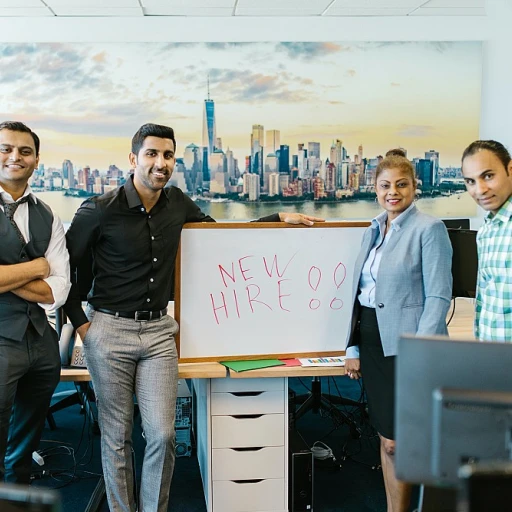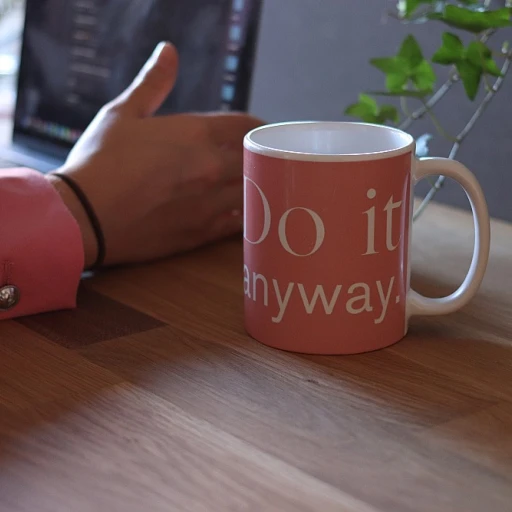Understanding Gamification in HR
Exploring the Integration of Games in Human Resources
The concept of gamification in human resources involves the adoption of game mechanics into HR processes to boost employee engagement and productivity. It draws on methods familiar within video games to capture the attention and dedication of employees in a manner that traditional methods have often failed to achieve.
In recent years, gamification has gained traction in diverse sectors, including education and business, thanks to its ability to revolutionize how teams engage with organizational goals. By embedding these game elements into HR strategies, organizations can elevate their approach to employee development, driving both better results and increased satisfaction.
This innovative strategy involves using game-based elements like points, badges, and leaderboards, which can transform mundane HR tasks into more engaging and rewarding experiences. Through careful integration, companies have observed remarkable improvements in system-related processes and employee participation.
From enterprise gamification at large-scale summits to social media platforms leveraging game mechanics, the implementation requires a nuanced understanding of both the game dynamics and the organization’s objectives. As more businesses move towards this cutting edge of innovation, the steady rise of enterprise gamification becomes clearer.
For those interested in how ethical practices can support long-term success in organizational contexts, further insights can be found
here.
While gamification has proven to be effective, it does present challenges and requires careful consideration to tailor it to specific HR needs. As you explore the benefits of gamification, understanding the potential hurdles and how to address them will be crucial to your success.
Benefits of Gamification for HR Communication
Advantages of Integrating Gamification in the Workforce
The use of gamification in HR communication has gained significant traction as businesses seek innovative solutions to enhance employee engagement and performance. Let's delve into some of the key benefits that this strategy brings to HR communication.
- Increased Engagement: By incorporating elements from video games such as earning points or leveling up, employees often show increased engagement with training materials and internal communications. Enterprise gamification taps into inherent competitiveness and curiosity, making mundane tasks more entertaining.
- Improved Learning and Retention: Gamified education in the workplace can facilitate better understanding and recall of information. Employees can learn game-based concepts while enjoying the process. Gamification techniques can make new systems and policies more accessible and easier to remember, contributing to a more knowledgeable workforce.
- Behavioral Change: The introduction of game mechanics has the potential to influence behavior and drive desired outcomes. Through sophisticated reward systems and social recognition platforms, businesses can reinforce positive behaviors, encouraging employees to adhere to best practices.
- Enhanced Collaboration and Social Interaction: Social elements like leaderboards and team-based challenges not only improve individual performance but also foster a sense of community. This boosts morale and strengthens ties among team members.
- Data-Driven Insights: Gamification allows HR departments to gather valuable data regarding employee preferences and engagement levels. These insights enable businesses to tailor their communication strategies more effectively, driving improvements in overall work culture.
- Boosted Motivation and Productivity: By emulating the addictive nature of games, gamification can significantly enhance motivation. Employees are often more productive and driven to achieve when they see the immediate results of their efforts, similar to progressing in a video game.
The latest news from summits such as the gamification summit in San Francisco highlight these benefits, underscoring the value that gamification knowledge brings to organizations. For more on advancing employee initiatives, you can explore this
communication blueprint.
Implementing Gamification in HR Practices
Integrating Game Elements into HR Processes
Implementing gamification into HR practices can revolutionize traditional operations and heighten engagement. By capitalizing on game mechanics, organizations enhance productivity and incentivize participation, creating a dynamic and engaging workplace. Let's explore how to seamlessly integrate these elements into your HR system.
Firstly, introducing a structured reward system similar to video game achievements can foster competition and camaraderie among employees. This system can be likened to consumer loyalty programs, where employees earn points or badges for completing tasks, attending training sessions, or achieving targets. Such mechanisms, when tailored to business objectives, can significantly boost motivation and engagement.
Another effective strategy involves using enterprise social media platforms to facilitate gamified learning and communication. By incorporating leaderboards, quizzes, and challenges, employees are compelled to participate actively, turning mundane tasks into engaging experiences. This approach enhances both individual education and collective insights.
Video games offer a plethora of gamification techniques, demonstrating that elements such as narratives and progressive challenge levels can be adapted to personal development programs within the corporate sector. Such initiatives, whether tailored for individual growth or team-building, have been increasingly used as enterprise gamification strategies at industry summits, particularly in venues like the renowned Gamification Summit in San Francisco.
It's crucial to remain informed about the latest news and trends in gamification, to continuously adapt and improve HR practices. Insights from experts in the field can provide a cutting edge to your strategies, ensuring sustained success. By celebrating the value these innovative practices bring to human resource management, as discussed
more here, companies can stay competitive and nurturing.
Challenges and Considerations
Overcoming Implementation Challenges in HR Gamification
Implementing gamification in human resources practices, while promising in its potential to boost engagement and communication, does come with its own set of challenges. Organizations venturing into gamification must carefully navigate these obstacles to ensure successful integration into existing HR systems and processes.
One of the major challenges lies in the selection of appropriate gamification techniques. The diverse array of tools available—from video game mechanics to social media-inspired incentives—can be overwhelming. This calls for businesses to possess a clear understanding of their organizational goals and employee demographics, allowing for a tailored approach that resonates with their workforce. The insights gained from consumer-focused gamification, derived from events like the gamification summit in San Francisco, can offer valuable perspectives.
Another hurdle is ensuring that these game-based elements remain relevant and engaging over time. Gamification requires continuous updates and iterations to maintain interest and effectiveness. The fast-paced evolution of technology and trends demands HR departments to stay abreast of the latest news and innovations, from advancements in video games to emerging social technologies.
Furthermore, companies may face the challenge of fostering a positive perception of gamification among employees. There can be initial resistance to the concept, particularly if it appears reminiscent of manipulation rather than as a tool for motivation. Clear communication and transparency about the objectives and benefits of gamification initiatives are crucial to gaining employee buy-in.
Lastly, the integration of gamification mechanics must balance between fun and professionalism. While engagement is the goal, HR practices must maintain a level of seriousness suitable for the workplace environment. The cutting-edge application of gamification should be sensitive to organizational culture and ethical standards.
Addressing these challenges requires a comprehensive strategy. As enterprise gamification continues to evolve, businesses need to adapt and refine their approach, taking cues from successful case studies and leveraging expert insights. By doing so, they can create a compelling gamification strategy that complements traditional HR methods and enhances overall communication.
Case Studies of Successful Gamification in HR
Exploring Proven Examples of Gamified HR Communication
The successful implementation of gamification in HR communication has been demonstrated by numerous organizations, showcasing its potential to enhance engagement and productivity. This success can be attributed to the effective use of game mechanics and techniques that tap into the motivational drivers similar to those in video games. Here are a few case studies illustrating the transformative power of gamification.
-
Global Consumer Goods Company: This organization introduced gamification into their learning and development programs, aiming to increase employee engagement. The use of leaderboards, badges, and points motivated employees to participate actively and complete educational modules. This approach led to a significant increase in knowledge retention and overall participation rates.
-
Enterprise Tech Firm in San Francisco: Seeking to drive enterprise gamification, this company employed gamification techniques to enhance their sales team's effectiveness. Sales representatives engaged in game-based scenarios, which simulated real-market interactions. The system provided immediate feedback, fostering improvement and learning in real-time contexts. As a result, the firm noticed a boost in sales performance and increased team morale.
-
Major Financial Institution: Facing challenges with internal communication and collaboration, this institution adopted gamification strategies inspired by social media platforms. They integrated a reward-based system that encouraged employees to share news, insights, and updates about the latest trends in the industry. This approach not only improved information flow but also cultivated a more collaborative work environment.
These case studies highlight the potential of gamification when embedded thoughtfully in HR practices. While the benefits are clear, it requires careful planning and implementation to align with organizational goals and employee needs. As more enterprises begin to explore the cutting-edge applications of game mechanics in the business domain, these examples serve as benchmarks for others aiming to harness gamification's potential.
Future Trends in HR Gamification
Emerging Trends and Innovations in Gamification for HR
The future of gamification in Human Resources is poised for exciting advancements, blending innovation with effective employee engagement strategies. As enterprises continue to harness the power of game mechanics, several emerging trends are shaping the HR landscape.
Firstly, the integration of advanced technologies like artificial intelligence and data analytics in gamification systems is set to revolutionize HR communication. These technologies offer deep insights into employee behavior and preferences, enabling more personalized and impactful engagement strategies. By leveraging data-driven approaches, businesses can refine their gamification tactics to maximize employee satisfaction and productivity.
Additionally, gamification is expanding beyond traditional loyalty programs to include real-time feedback mechanisms through social media platforms. This shift not only keeps the workforce engaged but also builds a more dynamic and interactive HR environment. Employees benefit as feedback becomes more immediate and actionable, enhancing their experience and motivation.
Furthermore, the increasing popularity of immersive experiences, such as virtual reality (VR) and gamified learning environments, is enhancing enterprise gamification. These immersive experiences offer captivating ways to conduct training and development, resulting in better retention and application of skills learned. Companies that adopt these cutting-edge technologies as part of their HR practices also stand out as innovators in employee engagement.
Another promising trend is the rise of global gamification summits and conferences, like the renowned gamification summit in San Francisco. Such gatherings provide a platform for professionals to share innovations, success stories, and lessons learned from the field. These events highlight how gamification knowledge is continually evolving, offering fresh insights for organizations looking to stay ahead in the competitive business landscape.
Moreover, the application of gamification in HR extends to fostering social connections within the workplace. By incorporating social game elements, companies encourage teamwork and collaboration, essential factors in building a strong workplace culture.
In essence, the future of gamification in HR is about creating a more engaging, efficient, and human-centered workplace. As organizations continue to innovate, the benefits of gamification systems, including enhanced learning, communication, and employee satisfaction, will undoubtedly continue to grow.













